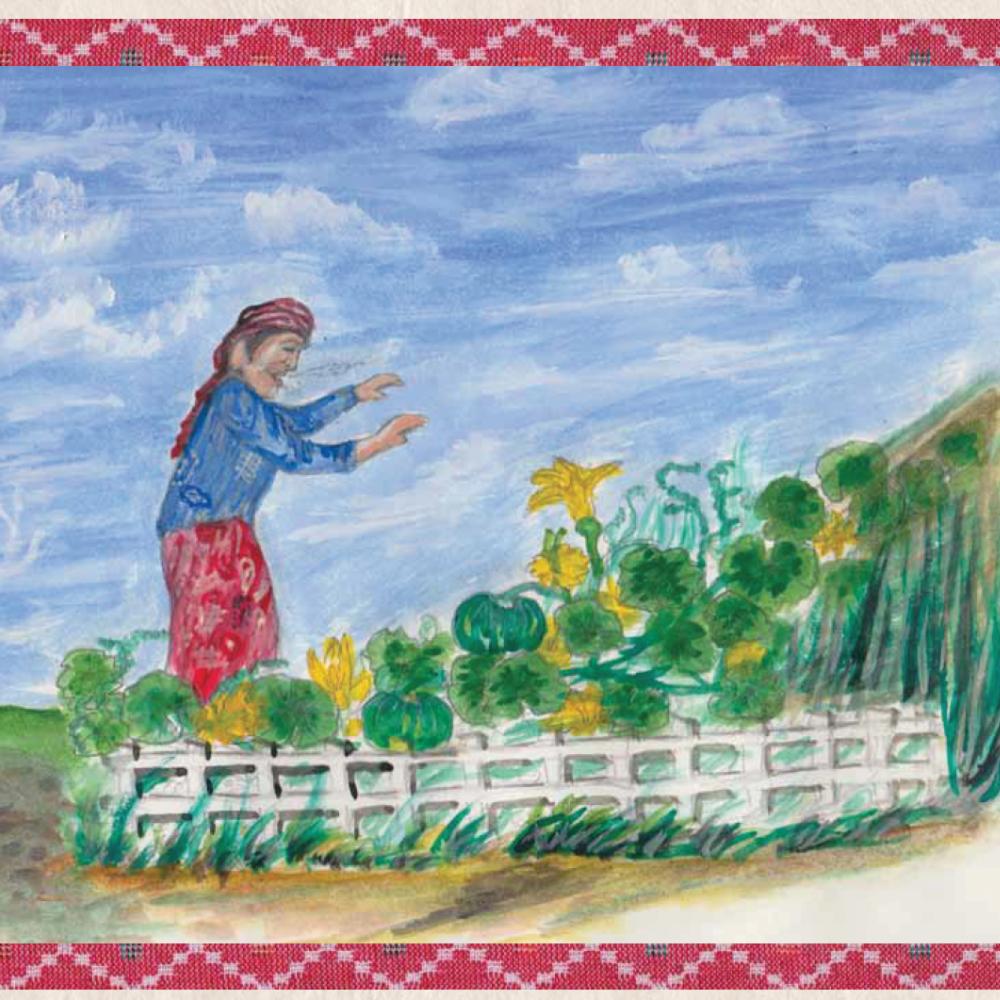When Hari Tiwari was a young girl, she lived in Bhutan, a tiny Himalayan kingdom situated between India and China. Her father, a farmer, told her stories as he combed her long hair, which he did most days after Hari’s mother died. One of the stories he told Hari was about a magical pumpkin that comes to life.
In the 1990s, more than 100,000 Nepali-speaking Bhutanese, mostly farmers and herders like the Tiwaris, were exiled to refugee camps in eastern Nepal. Many languished in the camps for two decades or more, their land seized and given away. For 18 years, Hari Tiwari lived in the Beldangi 2 camp, where she retold her father’s stories to her family and others in the camp. It was not the last place where they were told.
Although the United Nations worked to return the refugees, the Kingdom of Bhutan declined to accept them back. In 2008, the U.N. began resettling refugees to the United States and six other countries. One hundred fifty-four Bhutanese were resettled in New Hampshire. Today, the community num-bers 2,300, making it the largest refugee group in the state.
Most arrived speaking only Nepali, and many were illiterate in their own language. Agencies statewide responded to help the refugees find employment, health care, and education. But to make their way in their new country, the refugees also needed to acquire language skills.
In 2010, Terry Farish, director of an adult literacy program called Connections at New Hampshire Humanities, had an idea to honor the Bhutanese oral culture while promoting literacy: a bilingual children’s picture book that would tell a traditional folktale.
That winter, Farish and folklorist Jo Radner visited an ESOL (English for Speakers of Other Languages) class in Laconia consisting of Bhutanese Nepali elders. Radner asked, “How did people tell you stories?” Tiwari, by now a grandmother, raised her hand and told the story of a magical pumpkin who helps a childless couple with chores on the farm. The pumpkin grows up to marry a princess, with the help of a cucumber, squash, and gourd who gather the required payments for the marriage. The pumpkin later falls from a mango tree and out of the shattered pieces emerges a man. A wicked sister kills the young princess and is banished from the kingdom. The young princess comes back to life and she and her husband live happily ever after.
After hearing many folktales told by Bhutanese Americans over the course of several months, Farish’s team chose to publish Tiwari’s story.
A collaboration began between Farish, Radner, Nepali-speaking Bhutanese storytellers, artists, teachers, interpreters, transcribers, a book designer, and a children’s book writer. Dal Rai, an artist who had taught himself to draw in the refugee camp, was invited to paint watercolor illustrations for the story. Additional illustrations were created by members of the ESOL class in Concord, including small drawings of flora and fauna from their former lives in Bhutan. Handmade Resho paper from Bhutan was scanned, as well as a wedding sari and traditional textiles to provide the background, borders, and design elements of each page. After two years, The Story of a Pumpkin was presented at the New Hampshire Humanities’s Folktale Festival, with a bilingual telling by Tiwari and Radner.
“The parents were very happy and felt so surprised to see a Nepali book in America. They thought they would not be allowed to speak Nepali in America; we were not allowed to speak Nepali in Bhutan,” explains Hari Sharma, who was a teacher in Nepal and on the editorial board for The Story of a Pumpkin.
Since its publication, more than 600 copies have been distributed to schools and libraries across the state, and hundreds more have been sold. Tiwari and Rai have presented The Story of a Pumpkin at conferences, festivals, and schools, and the book has its own website, Facebook page, and blog. New Hampshire Humanities has distributed a discussion guide for librarians and teachers, and a readers’ theater version for adult literacy classes. Concord Hospital uses the book to ease anxiety of Bhutanese patients.
Tika Acharya, executive director of the Bhutanese Community of New Hampshire, wrote, “Folktales help us remember our traditional customs . . . and life on the farms back home. Our elders and seniors who read the story remember their own contributions of hard work on land they once owned and virtually travel back to our home. Our youngsters can ask questions and learn how life used to be in Bhutan and understand our culture in better ways.”
Traditional Bhutanese stories end with a gift for both the storyteller and the listener. Accordingly, the last lines of The Story of a Pumpkin read, “The teller of this story will receive a flower garland. The listener will receive a golden one. Whoever tells or listens to this story will find a place in heaven.”


